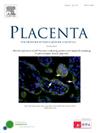Different risk of acute feto-fetal transfusion in basic clinical subtypes of monochorionic twins
IF 2.5
2区 医学
Q2 DEVELOPMENTAL BIOLOGY
引用次数: 0
Abstract
Analysis of the potential risk of acute feto-fetal transfusion (aFFT) in different clinical types of monochorionic twins using an in vitro placental simulation model.
The prospective study analyzed 157 fresh MC placentas from 2014 to 2020, excluding those with intrauterine intervention. A specially designed protocol was used for their preparation and analysis. The study included 108 placentas with an uncomplicated course, 31 cases of selective fetal growth restriction (sFGR), and 18 cases of twin-to-twin transfusion syndrome (TTTS). The number and types of anastomoses, umbilical cord insertion distances (UCID), and placental areas for each fetus were statistically analyzed. The primary objective was to assess differences in aFFT among various MC twin subtypes. The secondary objectives were to identify risk factors associated with the development of aFFT.
76/157 (48.4 %) cases of aFFT were confirmed, with an average transfusion time of 1 mL in 50 s (8–240 s). The occurrence of aFFT in uncomplicated, sFGR, and TTTS placentas was 62,5 %, 50,9 %, and 5,9 %, respectively (p < 0.001). The representation of AA anastomoses was significantly higher in the sFGR and uncomplicated groups compared to TTTS (84.4 % and 80.6 % vs. 11.8 %; p < 0.001).
Besides the presence of AA anastomosis, the main independent risk factor for the development of aFFT is its diameter (p < 0.001).
The potential risk of aFFT differs significantly among individual clinical subtypes of MC twins, depending on the presence and size of AA anastomosis.
单绒毛膜双胞胎基本临床亚型急性胎-胎输血的不同风险
利用体外胎盘模拟模型分析不同临床类型单绒毛膜双胞胎急性胎胎输血(aFFT)的潜在风险。该前瞻性研究分析了2014年至2020年157例新鲜MC胎盘,不包括宫内干预。采用了一种特殊设计的方案进行制备和分析。该研究包括108例病程简单的胎盘,31例选择性胎儿生长受限(sFGR)和18例双胎输血综合征(TTTS)。统计分析每个胎儿的吻合口数量和类型、脐带插入距离(UCID)、胎盘面积。主要目的是评估不同mctwin亚型间aFFT的差异。次要目标是确定与aFFT发展相关的危险因素。157例aFFT中有76例(48.4%)被确诊,平均输血时间为1 mL / 50 s (8 ~ 240 s)。aft在无并发症、sFGR和TTTS胎盘中的发生率分别为62.5%、50%、9%和5.9% (p <;0.001)。与TTTS相比,sFGR组和非复杂组的AA吻合率显著高于TTTS组(84.4%和80.6% vs. 11.8%;p & lt;0.001)。除了存在AA吻合外,aFFT发展的主要独立危险因素是其直径(p <;0.001)。在MC双胞胎的不同临床亚型中,aFFT的潜在风险有显著差异,这取决于AA吻合的存在和大小。
本文章由计算机程序翻译,如有差异,请以英文原文为准。
求助全文
约1分钟内获得全文
求助全文
来源期刊

Placenta
医学-发育生物学
CiteScore
6.30
自引率
10.50%
发文量
391
审稿时长
78 days
期刊介绍:
Placenta publishes high-quality original articles and invited topical reviews on all aspects of human and animal placentation, and the interactions between the mother, the placenta and fetal development. Topics covered include evolution, development, genetics and epigenetics, stem cells, metabolism, transport, immunology, pathology, pharmacology, cell and molecular biology, and developmental programming. The Editors welcome studies on implantation and the endometrium, comparative placentation, the uterine and umbilical circulations, the relationship between fetal and placental development, clinical aspects of altered placental development or function, the placental membranes, the influence of paternal factors on placental development or function, and the assessment of biomarkers of placental disorders.
 求助内容:
求助内容: 应助结果提醒方式:
应助结果提醒方式:


